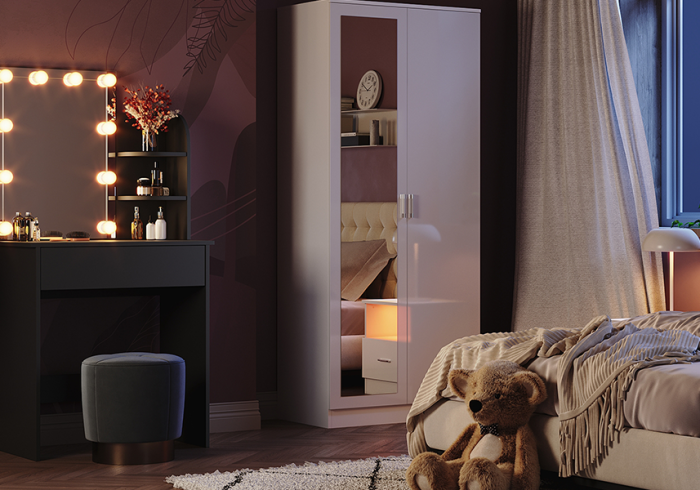Defining Luxury in Modern Society
Luxury has always been a multi-faceted concept, intertwining cultural, economic, and psychological threads that define its essence in contemporary society. As the world shifts towards greater consumer awareness and ethical considerations, understanding the definition and implications of luxury becomes a pivotal inquiry. To explore this complex topic, we begin with an exploration of luxury’s economic perspective, psychological implications, and shifts in consumer perception. This broadens our understanding of how luxury operates within various frameworks.
The Economic Perspective of Luxury
In economic terms, luxury goods are defined as products whose demand increases disproportionately as consumer incomes rise. Unlike necessities, the consumption of luxury items grows not merely as a response to basic needs, but as a reflection of an individual’s status, identity, and aspirations. Economists categorize luxury goods as those for which demand increases more than proportionally with income growth—this means that as individuals earn more, they are inclined to spend even greater percentages on luxury items. These can range from haute couture fashion to exclusive automobiles.
The luxury market significantly contributes to the global economy, with analysts projecting it to reach over $400 billion in the coming years. The extravagance associated with luxury purchases is often seen as a driver of economic activity. However, this raises questions about sustainability and ethical consumerism as the luxury market expands.
Psychological Implications of Luxury Goods
Luxury purchases extend beyond mere economic transactions; they fulfill various psychological needs. Owning luxury goods can foster feelings of prestige, self-actualization, and belonging. Psychologically, luxury items provide consumers with a sense of accomplishment and success. High-end brands often emphasize exclusivity, which resonates with the desire for self-identity in a social context.
The phenomenon of „conspicuous consumption,“ as coined by sociologist Thorstein Veblen, explains how purchasing luxury items is often about signaling wealth and social status to others. Consumers buy not only for personal satisfaction but also to express their identity and status within social hierarchies.
Shifts in Consumer Perception of Luxury
Today’s consumers are increasingly informed and discerning, leading to significant shifts in how they perceive and interact with luxury brands. Modern luxury is no longer defined solely by high price tags; instead, it is characterized by authenticity, craftsmanship, and the overall brand narrative. With the rise of social media influencing consumer behavior, transparency has become paramount. Brands that authentically convey their craftsmanship and ethical values resonate more with the modern luxury consumer.
Moreover, there is a growing demand for luxury experiences over material possessions. Consumers are leaning toward brands that offer exclusive experiences, challenging traditional notions of luxury rooted in materialism. This shift reflects broader societal trends prioritizing experiences and emotional significance over physical goods.
The Evolution of Luxury Brands
Historical Context of Luxury Brand Development
The evolution of luxury brands can be traced back to ancient civilizations, where luxury represented status and power. From Roman emperors to the grand courts of the Renaissance, luxury goods were symbols of power and wealth. During the 18th and 19th centuries, brands began to emerge as we recognize them today, focusing on craftsmanship and bespoke services.
The early 1900s marked the rise of iconic fashion houses such as Chanel and Louis Vuitton. These brands built their reputations through a commitment to exceptional craftsmanship and innovative design. As the 20th century progressed, marketing strategies evolved, and luxury branding became an art form, intertwining lifestyle with aspiration.
Contemporary Trends in Luxury Branding
Modern luxury branding is characterized by a blend of tradition and innovation. High-end brands are leveraging storytelling as a central component of their marketing strategy, creating narratives that enhance their prestige and connect emotionally with consumers. For instance, brands often share their heritage, detailing the intricate processes and artisans involved in crafting their products.
Furthermore, collaborations between luxury brands and contemporary artists or influencers have emerged as a driving trend, bridging the gap between traditional luxury and modernity. This has not only created buzz but also attracted a younger consumer base. The notion of ‚accessible luxury‘ has gained traction, wherein brands offer lower-priced tiers that maintain the allure of the brand while reaching broader audiences.
Digital Transformation and Luxury Consumption
The digital revolution has transformed how luxury brands connect with consumers. E-commerce and social media platforms enable brands to reach global audiences more efficiently, fostering direct relationships with consumers. For instance, luxury fashion houses that traditionally relied on brick-and-mortar stores have increasingly shifted toward online sales channels, offering virtual shopping experiences that cater to modern consumer preferences.
Nevertheless, this transformation is not without challenges. Luxury brands must maintain their exclusive image while leveraging digital marketing strategies. Balancing authenticity with digital accessibility is crucial in retaining traditional luxury values in a digital landscape. Successful examples include personalized online shopping experiences and virtual exclusives, which allow brands to maintain a sense of rarity while embracing technology.
Experiential Luxury: Beyond Material Goods
Understanding Luxury Experiences and Services
In recent years, the concept of experiential luxury has gained momentum, shifting the focus from ownership of material goods to the acquisition of unique experiences. Consumers are increasingly drawn to luxury experiences that enhance their quality of life, such as high-end travel, gourmet dining, or exclusive events.
Experiential luxury emphasizes creating memorable moments. Luxury hotels, for example, offer bespoke services tailored to visitors‘ preferences, ensuring an unforgettable stay. This trend is fueled by the millennial and Generation Z demographics, who prioritize experiences that contribute to personal development and social status over traditional luxury goods.
How Experiences Shape the Modern Luxury Market
The modern luxury market is being reshaped by the increasing importance placed on experiences. Data reveals that millennials and Generation Z consumers are willing to spend significantly more on experiences than on luxury products. According to a study by Eventbrite, 78% of young consumers prioritize spending on experiences over material possessions.
As a result, luxury brands are now investing in enhancing consumers‘ overall experiences. For example, brands like Aman and Four Seasons have expanded their offerings beyond just accommodation to include curated cultural experiences, wellness offerings, and culinary adventures. They create lasting memories while elevating their brand positioning.
Case Studies of Successful Luxury Experience Brands
Several luxury brands have successfully capitalized on the experiential trend, creating unique customer experiences. Take, for example, the iconic luxury brand Ritz-Carlton. They focus on ‚Ladies and Gentlemen‘ service, ensuring every guest’s experience is personalized, enhancing emotional connections to their stays.
Another noteworthy case is the luxury cruise line, Crystal Cruises, which offers destination-focused itineraries that blend luxury travel with unique cultural experiences. By centering their offerings on enriching experiences rather than mere transactions, these brands illustrate the power of experiential luxury.
Sustainable Luxury: The New Paradigm
The Impact of Sustainability on Luxury Purchasing
In response to growing environmental concerns, sustainability is reshaping the luxury landscape. Consumers are increasingly holding luxury brands accountable for their environmental impact, driving a pivotal shift towards sustainable practices. A report by Bain & Company indicates that nearly two-thirds of luxury consumers are increasingly concerned about sustainability and expect brands to adopt environmentally responsible practices.
Sustainable luxury emphasizes craftsmanship, ethical sourcing, and transparency in production processes, suggesting that luxury brands that integrate sustainability into their business model will emerge as leaders in this new paradigm. Some brands, like Stella McCartney and Gucci, are already spearheading these efforts, proving that luxury and sustainability can coexist harmoniously.
Leading Brands Committed to Sustainable Luxury
Several pioneering luxury brands are paving the way for sustainable practice in the luxury sector. By incorporating sustainable materials, reducing waste, and ensuring ethical labor practices, these brands redefine what it means to be luxurious in a responsible manner.
For instance, the luxury fashion brand, Chanel, has committed to reducing its carbon footprint significantly by 2030 and has already launched its ‚Chanel Mission 1.5°‘ initiative, focusing on protecting the planet. Similarly, brands like Allbirds merge comfort with eco-conscious materials, showing that luxury can also be sustainable.
Consumer Expectations for Sustainable Luxury
As consumers become more educated about environmental issues, their expectations for brands are evolving. Today’s luxury consumers want to know where their products come from, how they are made, and the ethical implications behind them. Brands that fail to meet these expectations may find themselves at a competitive disadvantage.
Transparency has become paramount, as consumers increasingly favor brands that are honest about their supply chains and sustainability efforts. Interactive platforms that showcase a brand’s sustainable practices are also gaining popularity, enabling consumers to make informed choices based on their values.
The Future of Luxury: Trends to Watch
Technological Influences on Luxury Markets
Technology is poised to reshape the luxury market in profound ways. From artificial intelligence and virtual reality to blockchain, innovations are enhancing customer experiences and providing new solutions for luxury brands. AI algorithms can personalize shopping experiences by analyzing consumer behavior and preferences, offering tailored suggestions that enhance the overall luxury experience.
Moreover, virtual reality experiences allow customers to engage with luxury products in unprecedented ways. For example, luxury watch brands are exploring augmented reality applications, enabling consumers to ‚try on‘ watches via their smartphones before making a purchase. This integration of technology makes luxury shopping more immersive and interactive.
Forecasting Changes in Luxury Demand
Looking toward the future, changes in demand for luxury goods and experiences will likely be influenced by social, economic, and environmental factors. For example, as younger generations ascend into affluent positions, their values will dictate the evolution of luxury. Brands must adapt to the changing preferences of consumers who prioritize sustainability and experiential offerings.
According to forecasts, the luxury market’s expansion will continue, fueled by increasing wealth in emerging markets and the continued proliferation of digital channels. However, only those brands that successfully weave in authenticity, craftsmanship, and sustainability will truly thrive in this changing landscape.
Preparing for the Next Generation of Luxury Consumers
The next generation of luxury consumers is already reshaping the market landscape. In order to appeal to these consumers, brands must be forward-thinking and agile. Building brand loyalty among younger audiences requires a greater emphasis on ethical practices, transparency, and meaningful engagement. Initiatives such as influencer collaborations, community-centric projects, and inclusivity are essential in developing a brand narrative that resonates with future luxury consumers.
Furthermore, marketers must invest in understanding generational preferences, leveraging data analytics to ascertain their target audience’s interests and behaviors. This approach not only refines targeting strategies but also ensures that brands remain relevant in a competitive market.
In conclusion, the concept of luxury is ever-evolving, shaped by economic forces, psychological needs, and technological advancements. Understanding these shifts is vital for brands seeking to navigate this dynamic landscape. As we look ahead, the luxury market must continue to adapt and innovate, fostering a sustainable and experiential approach that meets the demands of the modern consumer.



